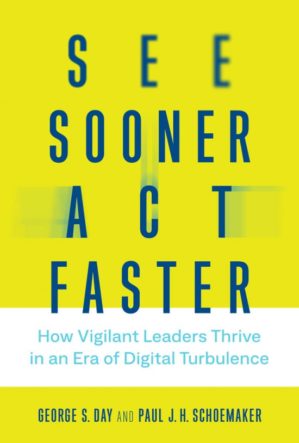George Day, Geoffrey T. Boisi Professor Emeritus, The Wharton School, and Paul Schoemaker, Q2 Tech
Excerpt: The costs of being slow to sense threats and opportunities on the competitive horizon can be devastating. Just ask RadioShack, a pioneer in catering to electronics hobbyists. After jumping into mobile phone distribution in the 1990s, the U.S.-based retail chain with more than 4,000 stores didn’t respond quickly enough to the rigors of e-commerce and failed to find a way to connect with the new generation of electronics tinkerers and makers. Following multiple attempts to regain its footing, the once-thriving company filed for bankruptcy in 2015 and never recovered.
Businesses can avoid such perils by spotting directional shifts ahead of their rivals. In our research on 118 companies in the past decade, we found that what sets the most vigilant ones apart are not the tools and methods they use but their systematic approaches to determining where to look and how to explore. They tend to take four basic steps. First, they strategically scope the environment, often scanning beyond their comfort zones, to begin identifying where relevant signals may come from. Second, they formulate guiding questions that direct the organization’s scarce attention to the places most likely to spawn threats or opportunities. Third, they conduct targeted analyses to better understand the sources and meanings of any weak signals they pick up. Finally, they track the most intriguing signals, amplifying and clarifying them sufficiently to act decisively when the fog clears.
 This article draws on ideas in the authors’ book See Sooner, Act Faster: How Vigilant Leaders Thrive in an Era of Digital Turbulence.
This article draws on ideas in the authors’ book See Sooner, Act Faster: How Vigilant Leaders Thrive in an Era of Digital Turbulence.



